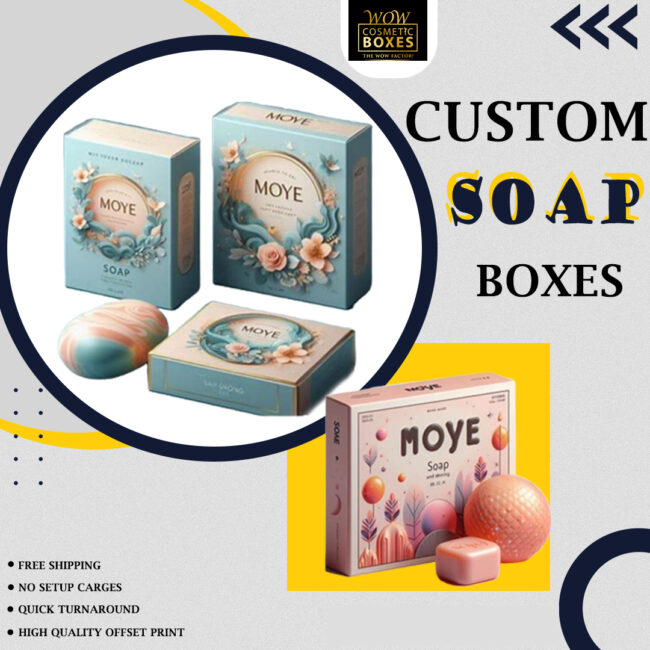
You can’t afford to ignore several key retail packaging trends shaping today’s market. First, sustainability is critical; consumers increasingly demand eco-friendly solutions. Next, digital integration is on the rise, with features like QR codes and Augmented Reality engaging shoppers interactively. Brand storytelling enhances emotional connections through unique visuals and narratives, while minimalism streamlines design for better recognition. Finally, personalization in luxury packaging creates an exclusive experience that elevates perceived value. Staying on top of these trends can greatly impact your brand’s success and consumer engagement, so explore what’s next to maintain a competitive edge.
Main Points
- Eco-friendly packaging is essential as consumers increasingly demand sustainable solutions, influencing brand strategies and practices.
- Interactive packaging experiences using QR codes and AR are crucial for engaging tech-savvy consumers.
- Authentic storytelling through packaging enhances emotional connections and strengthens brand identity.
- Minimalist designs streamline branding and improve consumer recognition, resonating with modern preferences for simplicity.
- Personalization and luxury packaging elevate perceived value and create unique experiences for affluent shoppers.
Sustainability and Eco-Friendly Solutions

Embracing sustainability in retail packaging is becoming a necessity as consumers increasingly demand eco-friendly solutions.
You’re likely aware that younger demographics are prioritizing sustainable packaging, driving brands to adopt biodegradable materials and minimalist designs. Companies like Coca-Cola and Starbucks are setting ambitious sustainability goals, such as Coca-Cola’s target for 50% recycled content in bottles by 2030.
With the rising awareness of plastic pollution, the shift towards eco-friendly materials like starch and cellulose is reshaping the packaging landscape. Brands like No Nasties are leading the charge by utilizing reusable organic cotton bags, showcasing how eco-conscious values can enhance packaging strategies.
Furthermore, the rise of custom organic hemp soap boxes exemplifies the growing trend towards sustainable packaging solutions.
As consumer preferences evolve, aligning your packaging with these trends isn’t just a choice—it’s essential for staying competitive.
Digital Integration and Smart Features
Digital integration in packaging is transforming the retail landscape, with 75% of consumers now seeking interactive experiences that enhance their shopping journey. By incorporating features like QR codes and Augmented Reality (AR), brands can considerably boost consumer engagement.
Furthermore, utilizing eco-friendly materials in packaging can further appeal to environmentally conscious consumers and align with current sustainability trends, as seen in custom packaging solutions.
For instance, Frootis’ AR initiative created memorable connections, elevating product visibility and driving sales. HealthifyMe takes it a step further, using AI-powered nutritionist services on packaging to educate consumers about product usage.
In addition, tamper-evident features not only enhance security but also instill trust through transparent safety measures. Brands like Nestlé effectively utilize QR codes to direct customers to detailed product information, showcasing a clear trend towards informative and interactive packaging solutions that resonate with today’s tech-savvy shoppers.
Brand Storytelling and Visual Identity

As brands increasingly harness digital integration to engage consumers, the importance of brand storytelling and visual identity becomes clear.
Authentic storytelling through packaging designs can create emotional connections, setting you apart in crowded markets. For instance, custom makeup kit boxes elevate brand image considerably and enhance overall customer experience.
Incorporating intricate illustrations and embossed motifs enriches your narrative, effectively communicating your unique values. A strong visual identity—achieved through consistent design elements—enhances brand recall and builds consumer trust, ultimately driving loyalty and sales.
When your packaging design aligns with your overall narrative, you’re better positioned to resonate with your target audience, boosting engagement and encouraging purchase decisions.
Compelling packaging narratives, supported by well-thought-out visual identities, can transform how your product is perceived, emphasizing its benefits and origins in a competitive landscape.
Minimalism and Practical Design
Minimalism’s impact on retail packaging is evident in its ability to streamline designs while enhancing brand recognition. Minimalist packaging emphasizes clean lines and monochromatic color schemes, making your brand more memorable.
Additionally, incorporating custom packaging solutions can help differentiate your product in a competitive market. By focusing on practical design, you improve consumer experience, ensuring accessibility and convenience in product usage.
This trend also aligns with the increasing demand for sustainable materials, allowing you to create eco-friendly packaging that doesn’t sacrifice functionality. Innovative designs featuring flat illustrations convey clarity, resonating with modern consumers who prefer less clutter.
As consumer preferences evolve, embracing minimalist and practical designs positions your brand to stand out in a crowded market, effectively communicating essential information without overwhelming potential buyers.
Adopting these trends can greatly enhance your brand’s appeal and market presence.
Personalization and Luxury Packaging

Personalization and luxury packaging are rapidly reshaping the retail landscape, offering consumers an experience that transcends the product itself. In India, brands are increasingly adopting custom designs and premium materials to create unique consumer experiences that foster loyalty.
With luxury packaging valued at $16 billion, high-quality substrates and exclusive designs appeal to affluent shoppers, enhancing perceived value. The use of luxury rigid boxes exemplifies how tailored packaging solutions can elevate brand perception and product value.
For instance, Sabyasachi’s exclusive packaging exemplifies how personalized luxury can differentiate products in a crowded market. Additionally, brands are investing in bespoke printing embellishments and craftsmanship to position their offerings as premium.
This trend reflects a growing consumer willingness to spend more on products that deliver memorable packaging experiences, underscoring the importance of personalization in enhancing the overall consumer experience.

